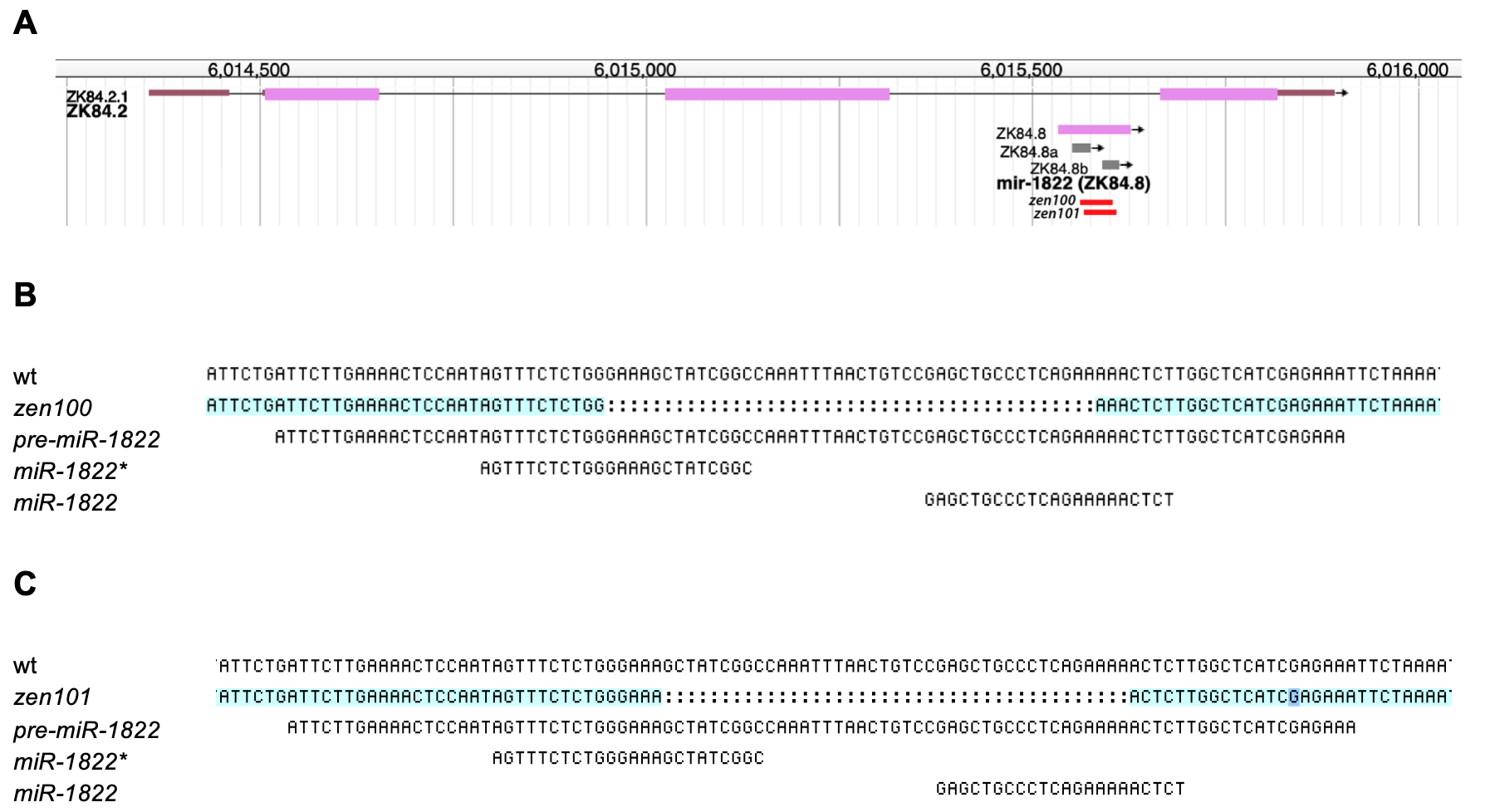Description
microRNAs are small noncoding RNAs of ~22 nucleotides in length that regulate gene expression by degrading target mRNAs or inhibiting their translation. To our knowledge mir-1822 currently lacks deletion alleles, impeding mir-1822 functional characterization. We generated two new deletions of the C. elegans mir-1822 locus, using the CRISPR-Cas9 genome editing technique. The following mir-1822 specific Alt-R crRNAs were ordered from IDT: gRNA1, 5’-AGTTTCTCTGGGAAAGCTAT-3’ and gRNA2: 5’-TGAGCCAAGAGTTTTTCTGA-3’. To create the deletions, Cas9 (Alt-R Cas9, IDT) was loaded with the two mir-1822 guide RNAs, dpy-10 guide RNA (Arribere et al, 2014) (IDT), and tracer RNA (IDT) and the mixture was injected into C. elegans. The resulting progeny were screened for CRISPR-Cas9 positive animals as previously described (Arribere et al, 2014). The following PCR primers were used to screen for deletions of interest: mir-1822.for1: 5’- CGGAAGGACACCTGCCACCAATG-3’ and mir-1822.rev1: 5’- GAGGGCAATCTTCTTCTGGTCGCC -3’.
Using PCR screening, we identified two independent deletions of approximately 40 nucleotides each, with the positions of each deletion schematized in Figure 1A. mir-1822(zen100) removes 43 base pairs (Fig. 1B), and mir-1822(zen101) deletion removes 41 base pairs from the mir-1822 precursor region (Fig. 1C). Each deletion was sequenced twice for confirmation. Both mir-1822 alleles are homozygous viable and appear to be superficially wild type, with no obvious phenotypes observed in either strain.
Reagents
UY265 mir-1822(zen100) and UY266 mir-1822(zen101) strains are available upon request.
Acknowledgments
These deletions were created during the BIOL676 Molecular Genetics course at Kansas State University. We thank all the students of the Fall 2019 BIOL676 course for help with screening.
References
Funding
Funding for BIOL676 is provided by Kansas State University. This work was in part supported by R35GM124828 to A.Z.
Reviewed By
Katherine McJunkinHistory
Received: December 28, 2019Accepted: January 9, 2020
Published: January 16, 2020
Copyright
© 2020 by the authors. This is an open-access article distributed under the terms of the Creative Commons Attribution 4.0 International (CC BY 4.0) License, which permits unrestricted use, distribution, and reproduction in any medium, provided the original author and source are credited.Citation
Anderson, M; Mash, M; Haskell, D; Hebbar, S; Zinovyeva, AY (2020). Two novel alleles in C. elegans mir-1822 gene.. microPublication Biology. 10.17912/micropub.biology.000212.Download: RIS BibTeX




